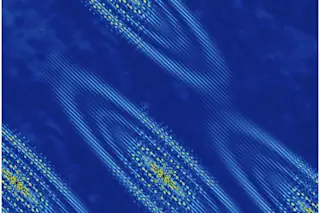Kenneth Chau, an engineer at the University of British Columbia, helped shine a light on how electrons impart momentum. (Credit: UBC Okanagan) Quantum mechanics, the science of the smallest stuff, is famously kooky. Light is both a particle and a wave, electrons zip around and travel instantaneously, cats are both alive and dead — it’s hard for our human brains to comprehend. One phenomenon that sort of makes a little sense, if you think about it right, is that light alone can push things around. Formally known as ‘imparting momentum,’ the idea can also seem quantumly crazy. I go out in the sunlight all the time without feeling any pushing! But here’s how I’ve heard it explained: Momentum is defined as mass times velocity, so even though photons (particles of light) have zero rest mass, their velocity is enormous (literally the speed of light) and they’re never really at rest, ...
Experiment Reveals How Light Shoves Matter Around
Discover how imparting momentum from light enhances our understanding of quantum mechanics and its applications in technology.
More on Discover
Stay Curious
SubscribeTo The Magazine
Save up to 40% off the cover price when you subscribe to Discover magazine.
Subscribe













